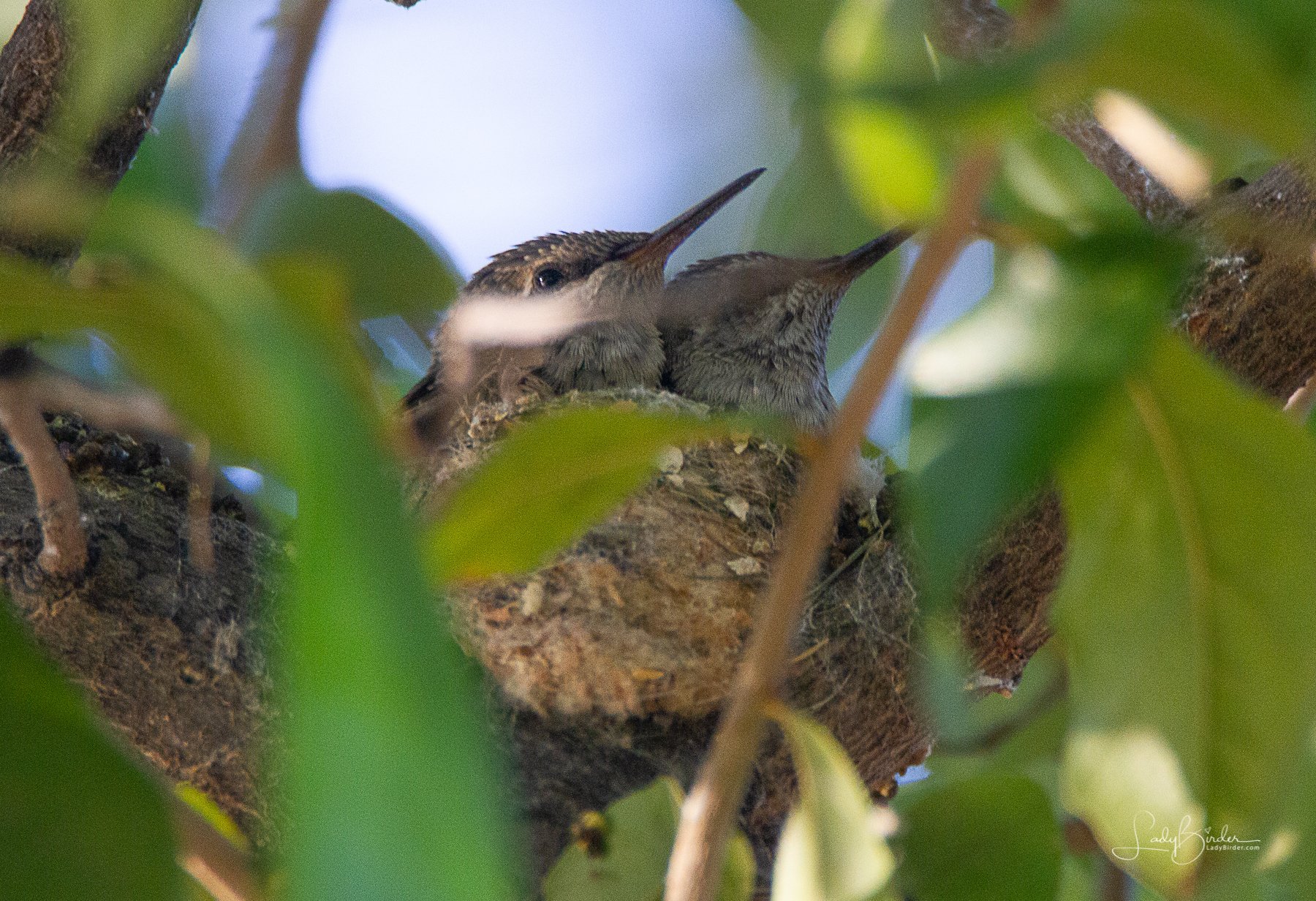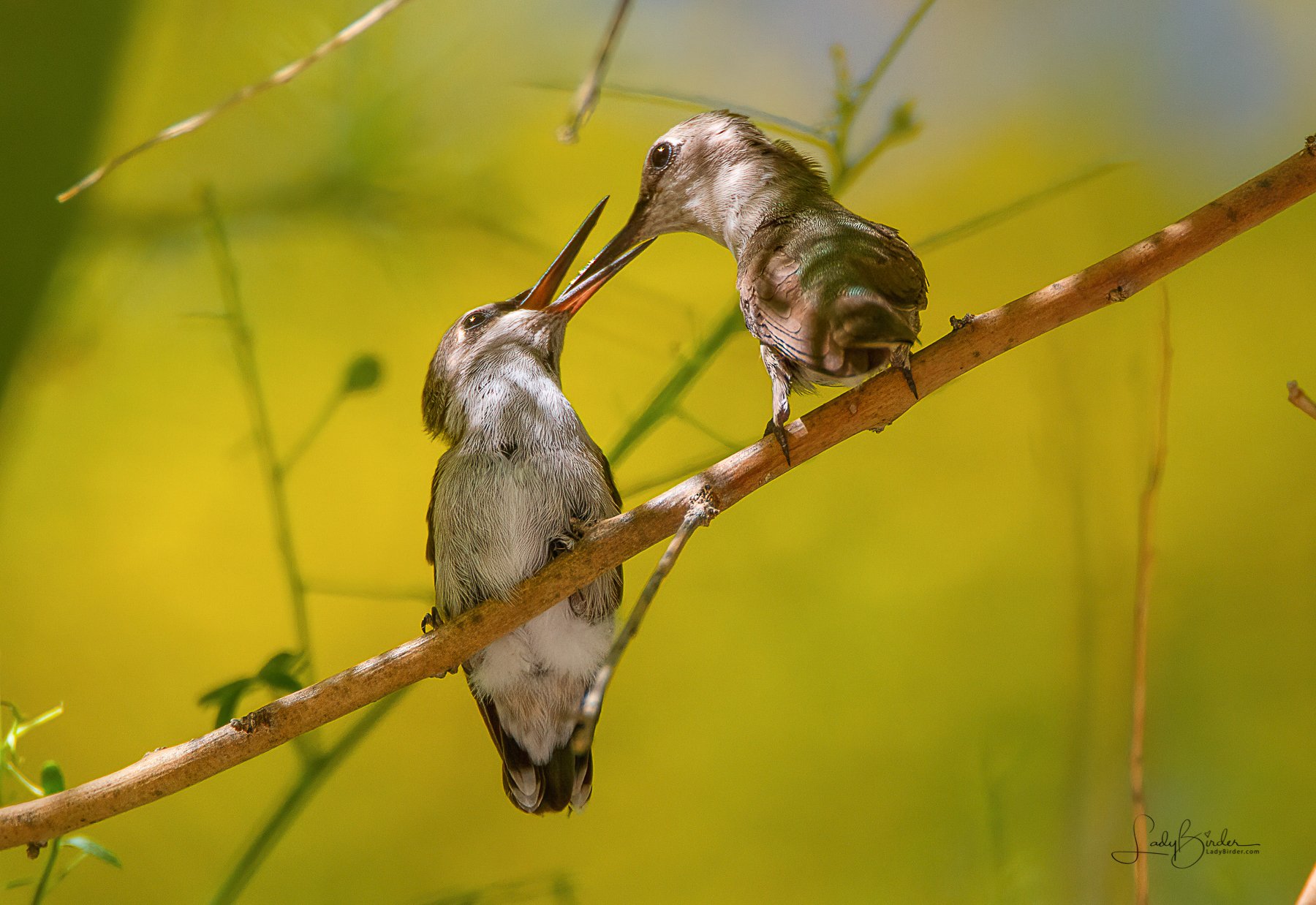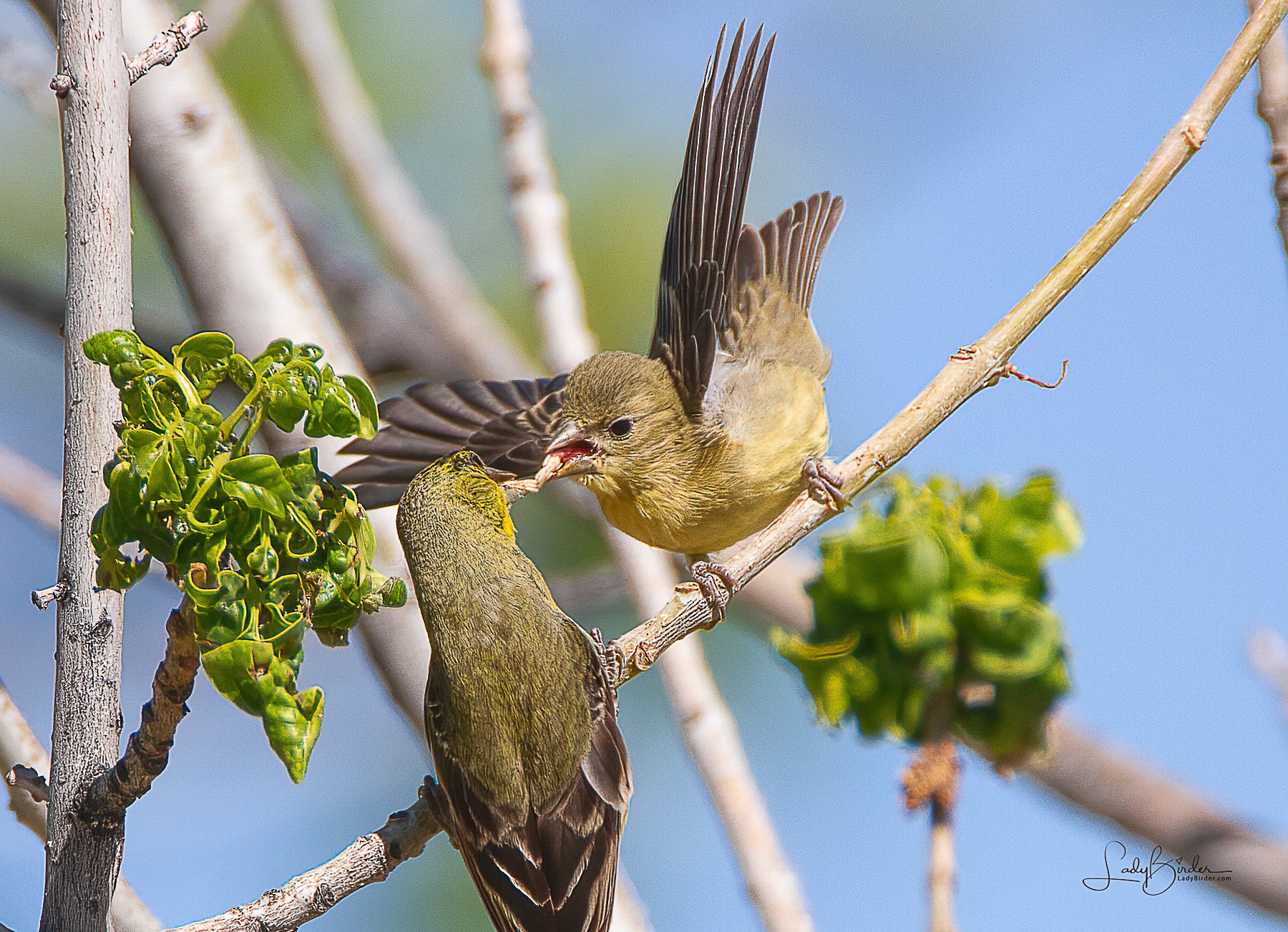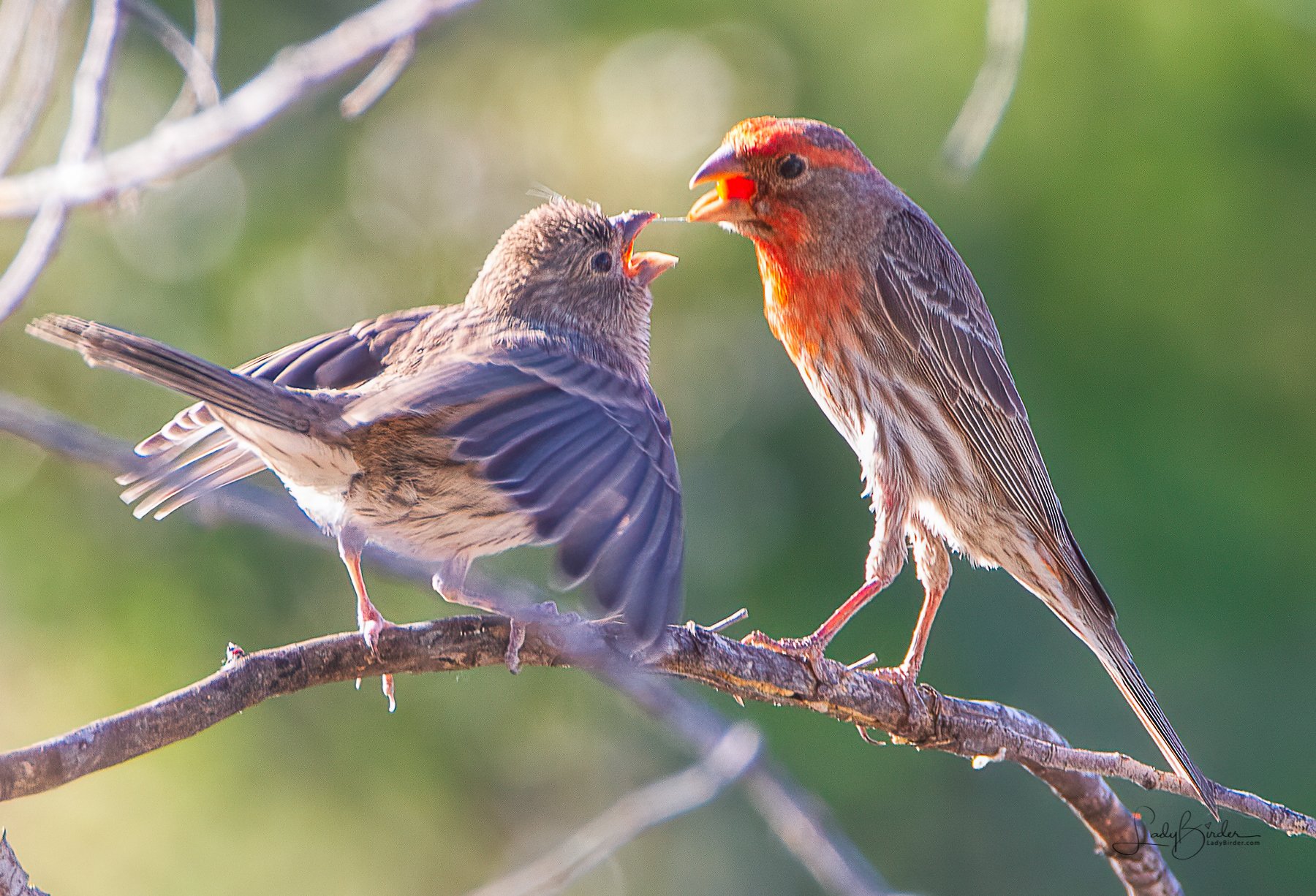The Bird Days of Summer
August 6, 2020
This has been one strange year, hasn't it? With many activities curtailed due to the pandemic, the days seem to inch along at a snail's pace, and each one seems longer than the day before. I barely remember what occupied my time during the last eight months – except for an unexpected move in July. Note to self: never move during a pandemic. In fact, never move again.
Suddenly, it's August, and the sultry Dog Days of Summer have set in. According to Wikipedia, this well-used term refers to the period following the star system Sirius's rise, associated with heat, drought, sudden thunderstorms, lethargy, fever, mad dogs and bad luck. That's a perfect – albeit bleak – description of a pandemic summer in Arizona. I'm guessing that everyone, no matter where you're spending your summer, could use a little break from the boredom of this year. So let's call this the Bird Days of Summer instead because what's better than looking at and talking about birds? Baby birds are even better.
Grumpy Baby Birds
That said, I will caution you that not all the baby birds I captured images of this spring and early summer were sweet and cuddly; some species produce, well, awkward-looking young.
Take, for instance, the Great-tailed Grackle. While some may argue that these birds are noisy pests and not very attractive, I have always considered them handsome – especially the males with iridescent black feathers and fierce yellow eyes.
It's only fitting that these big, brash birds produce big, brash offspring. They don't resemble their parents, with bills that seem too large for heads adorned with wispy feathers like an ornate hat. This fledgling does not yet have his adult plumage and is still being watched over and fed by his parents. In fact, this baby's father kept a very close (yellow) eye on me while I photographed his young one and verbally warned me not to get any closer. The baby just stared at me with halfhearted interest. It was hot, after all.
Great-tailed Grackle fledgling just looked at me with halfhearted interest.
Although Say's Phoebe babies resemble adults and are as large as their parents within a few weeks, they still look like grumpy babies just awakened from a nap. The telltale yellow gape flange around the bill signifies a recently fledged bird. The bright color attracts attention when the parents bring food, and even after leaving the nest, that color takes some time to fade.
Hooded Orioles visit my community each spring, raising young from nests high in palm trees before continuing to their winter homes in southern Mexico and further south. I caught this one in another of those grumpy poses before it joined its mother on a nearby branch.
Cute and Cuddly Birds
Compare those young birds to these Anna's and Costa's Hummingbird fledglings who, at only a week or two old, look like tiny replicants of their parents. A mother hummingbird feeds her babies about every 20 minutes. The babies, who are blind at first, will lift their heads and open their mouths when they feel the wind from her wings. She inserts her beak into their mouths, dropping regurgitated insects and nectar inside with a sewing machine motion.
Also in the avian "cuteness" column would be Gambel's Quail chicks, little fluff balls on short legs with huge feet. A quail brood is usually quite large – I've seen as many as 10 or more fuzzy chicks scurrying along after their parents. However, I sense that quail parents aren't terribly clever, as I once witnessed a pair run across the street with their brood desperately trying to keep up. The parents hopped onto the curb and raced on without a backward glance at their little ones. The babies failed to scale the curb and ran up and down the gutter, frantically searching for another way up. Maybe that's why they lay so many eggs.
Black-tailed Gnatcatchers are one of the smallest songbirds in North America, weighing about as much as a nickel, so you can imagine the size of this fledgling. Both parents, who often remain together all year, share the responsibility of feeding the nestlings, and their young are reported to leave the nest about 10-15 days after hatching.
Another tiny but tough bird is the Verdin, the most common songbird in my neighborhood. A pair will build several nests yearly, laying 3-6 eggs each time. By summer, there are a lot of Verdins around. Both parents feed the nestlings, who will leave the nest about 21 days after hatching, but the babies will return to the nest to sleep at night.
I love to watch avian parents feeding young and teaching them the art of survival. It can be quite a challenge as they navigate the leaves and branches of tall trees, especially when the fledglings are still learning to balance and fly. In the following photos, a Lesser Goldfinch and a House Finch both struggle to stay perched as they stretch toward a parent for their meals.
That got me thinking: are the flapping wings to get their parents' attention or help with balance? What happens if they fall?
I discovered a study conducted in 2014 by researchers at the University of California, Berkeley, that showed birds have an innate ability to maneuver in midair. This talent could have helped their ancestors learn to fly rather than fall from a perch. The researchers observed that even ungainly, day-old baby birds successfully used their flapping wings to right themselves when they fell from a nest. This skill improves with age until they become coordinated and graceful flyers. Oh, and yes. The flapping also signals to their parents that they're hungry and want to be fed – NOW.
Altricial versus Precocial Birds
Most songbirds, hummingbirds and woodpeckers are known as altricial, which means they are born naked and blind, making them vulnerable and totally dependent on their parents.
American Robins are born blind and naked (altricial) but will develop quickly and be ready to leave the nest in two to three weeks. However, it will remain in family groups for several weeks as they learn to forage and fly.
In contrast to altricial birds, Pied-billed Grebes are known as precocial, which means they hatch with their eyes open and are covered with downy feathers that are soon replaced by adult feathers. Grebes can swim shortly after hatching and often ride on their parent's backs.
I can't end this blog without a picture of the Great Horned Owl born near my house this year. I am always swept away whenever I see one of these magnificent creatures. With his yellow-eyed stare, this owlet looks so soft and cuddly – until you notice those powerful claws and realize the fierce hunter he will become.
Owlets remain in the nest for about six weeks, then climb onto nearby branches to strengthen their wings and legs, a process called "branching." They may perch in unusual areas or even rest directly on the ground, which often leads humans to try to "rescue" them. But owl parents are very protective of their young and have been known to attack animals and humans that they perceive as threatening. The owlets begin taking short flights at seven weeks and can fly well at 9-10 weeks.
As the summer drags on through insufferable heat and birds are less active except early in the morning, I'm happy to have had the time this year to seek out and observe the baby birds within my neighborhood. What a thrill to find a nest, watch it fill with hatchlings and then follow the family as the young leave the safety of their nests and learn vital life lessons. This simple observation of life outside the realm of human worries – this connection to nature – brings joy amid chaos, lifts one above the fray of endless negative news cycles, and makes one realize that there are still plenty of things to be hopeful about. If you're just discovering that about birds....you're welcome!













